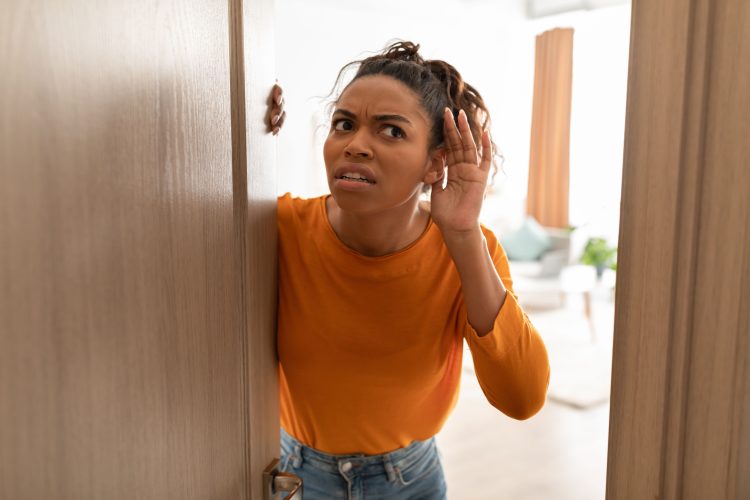Listen up. Literally! Sounds can indicate that there’s an issue with the health of a house, whether it’s the seller client who owns it or the buyer client taking a look-see. As a residential real estate sales professional, you will get to see (and hear) more homes than anyone, thus exposing your ears to the many noises that may or may not be something to investigate further.
“Perked-up ears can reveal everything from benign noises to potential issues that require immediate attention,” says Courtney Klosterman, a home insights expert at Hippo Home Insurance. “Here are house sounds homeowners and buyers should know, their possible meanings and the steps that should be taken to address them effectively.”
Popping or cracking noises
“They can arise from the expansion and contraction of building materials due to temperature changes,” says Klosterman. “While these noises are generally harmless, homeowners should be proactive about ruling out any potential structural issues.
“Popping and cracking sounds are often more noticeable during temperature fluctuations, such as the transition from fall to winter. Building materials can emit sounds when expanding and contracting occurs depending on the makeup and age of the home. Common areas where these sounds are emitted include basements, attics or the first floor.”
What to do:
- Inspect the home for any visible signs of damage. Document any new cracks, shifts or irregularities related to the noises.
- Keeping the home at a relatively stable temperature can help minimize the frequency of these noises.
Hissing or running water sounds
“These sounds can indicate leaks or plumbing issues within walls or floors,” says Klosterman. “Water damage can quickly become costly if not acted on quickly. If the noises are occasional and not accompanied by other problems, there might not be an immediate need to worry. However, there are signs to look for where professional help becomes necessary.”
What to do:
- Watch for any unusual increases in water usage either on the water utility bill or water meter that could indicate a problem.
- Inspect exposed pipes, joints and fixtures for signs of moisture or corrosion.
- If there are any spikes in water usage or signs of pipe corrosion, contact a plumber.
Whistling noises near windows and doors
“These can come from drafts or gaps in the ceiling,” says Klosterman. “The sounds impact comfort and air conditioning and heating efficiency, which can lead to increases in utility bill costs.”
What to do:
- Conduct a visual inspection of windows and doors, paying close attention to the frames, sashes and weatherstripping. Look for any visible gaps or areas where the sealing might be compromised.
- Check the condition of the weatherstripping around windows and doors. Worn-out or damaged weatherstripping can allow air to enter, causing whistling sounds.
- Use appropriate sealing materials such as weatherstripping, caulk or door sweeps to seal gaps and prevent drafts. Focus on areas where air infiltration is likely to occur.
High-pitched ringing or buzzing
“These sounds can indicate electrical issues such as loose wiring or a malfunctioning electrical component,” says Klosterman. “These noises can lead to safety hazards if left unaddressed, increasing the possibility of house fires.”
What to do:
- Immediately turn off the circuit breaker associated with the area where the noise is heard. This precautionary step can prevent electrical accidents or fires.
- Carefully inspect the area for visible signs of electrical issues such as flickering lights, burn marks or damaged outlets.
Gurgling noises in drains
“These can indicate poor drainage, venting issues or larger plumbing problems within a plumbing system,” explains Klosterman. “Coverage for water backup isn’t always covered by homeowners insurance and can be costly to cover without appropriate coverage.”
What to do:
- Determine which drains are producing the gurgling noises. Check sinks, showers, toilets and other plumbing fixtures.
- Inspect drains for visible blockages and debris. Slow drainage or standing water can cause gurgling.
- Poor plumbing ventilation can lead to gurgling. Check vents on the roof or exterior walls for potential blockages.
- If a minor blockage is causing the noise, use a plunger to try and clear it.
Rattling or vibrating in ductwork
“Noises in the HVAC ductwork can be caused by loose components or debris,” says Klosterman. “They can impact indoor comfort and HVAC system efficiency. On average, a new HVAC unit can cost $2,500 – $5,000. However, before considering a costly replacement, address the source of the noise issue.”
What to do:
- Carefully inspect visible sections of the HVAC ductwork for loose components, gaps or debris. Look for any areas where the ducts might be contacting other surfaces.
- If you identify loose duct components, secure them using appropriate fasteners. Make sure all duct sections are properly connected.
- Clear any debris, dust or foreign objects from the ductwork that might be causing the rattling or vibrating noises.
Scratching, rustling or thumping in the walls or attic
“These can be due to the presence of insects or animals,” says Klosterman. “If unaddressed, these issues can lead to more significant repair problems, such as damage to insulation, electrical wiring and structural components of the home. Insects and animals can settle within the home’s insulation, which can impact temperature regulation. They can also gnaw at electrical wiring, which leads to short-circuits, electrical malfunctions and fires.”
What to do:
- Pay close attention to the sounds and try to identify their location and frequency.
- Safely investigate the area where the noises are coming from. Use caution and appropriate protective gear.
- Check for any visible openings or gaps in walls, roofs or foundations where animals or other insects might be entering.












